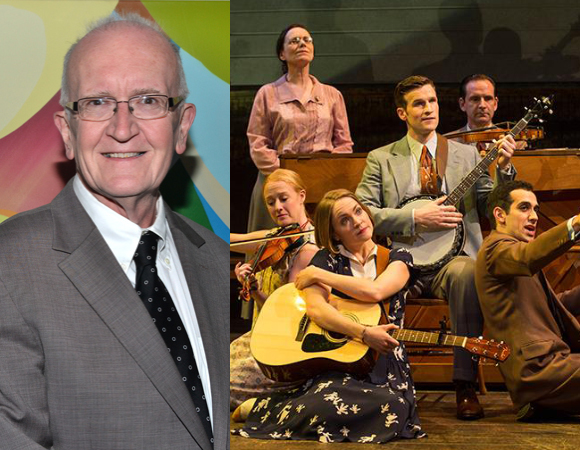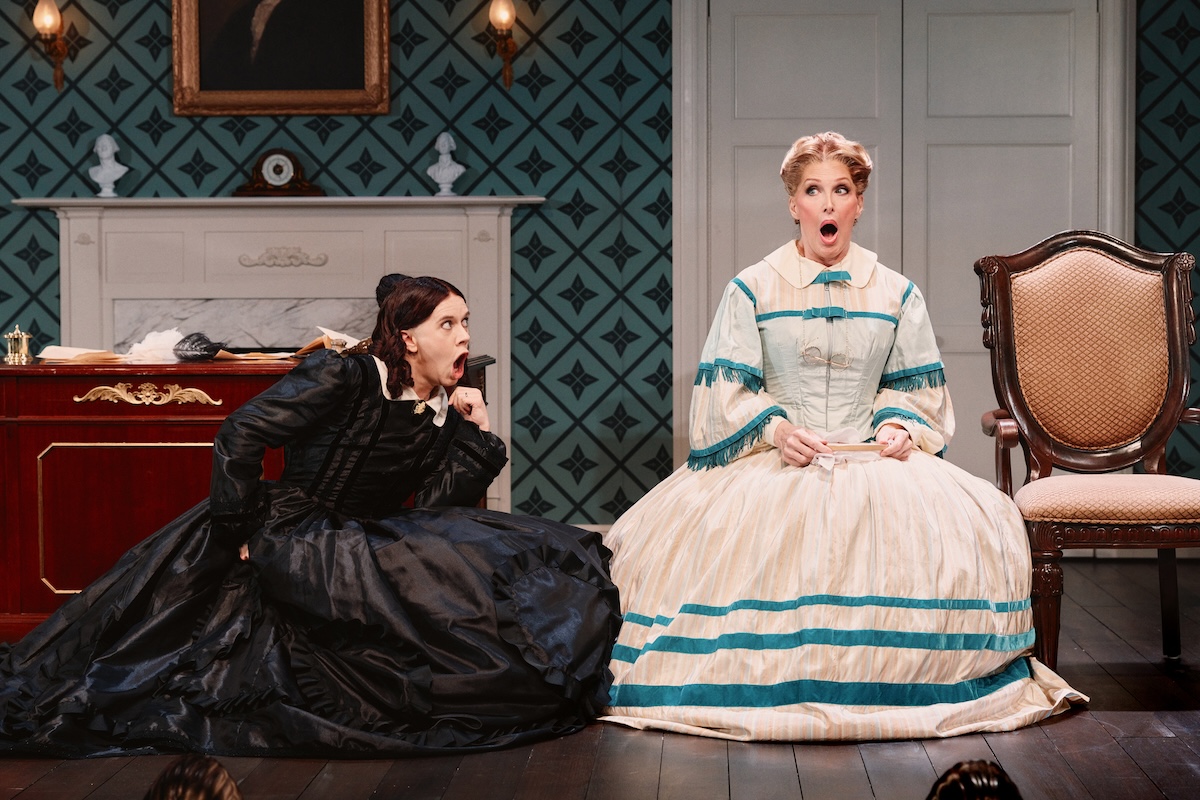John Doyle on Allegro, The Visit, and Patti LuPone's Tuba Skills
In musical-theater circles, the name John Doyle is synonymous with a particular style: one in which actors play their own instruments. This polarizing tactic seriously impresses some and royally disturbs others. But Doyle is hardly a one-trick pony; the Scottish Tony Award winner (for Sweeney Todd, with a tuba-wielding Patti LuPone) has directed other productions in the United States and Europe in which the actors leave their instruments at home.
Now an associate director at New York's Classic Stage Company (where in 2013 he directed a lush, large Passion), Doyle once again returns to the actor-musician technique for a stripped-down version of Rodgers & Hammerstein's rarely seen 1947 musical Allegro. Following the life of a young man from birth to youth to disillusioned adulthood, Allegro was the songwriting pair's first real flop and is today is almost never produced. But Doyle saw potential. In a wide-ranging interview with TheaterMania, he discusses why this particular style is the perfect fit for this how. He also gives a preview of forthcoming projects, including the Broadway potential for his revised revival of The Color Purple and the long-gestating Kander & Ebb musical The Visit.

(© David Gordon; Matthew Murphy)
Allegro is usually regarded as one of those noble failures. Why did you decide to reexamine it?
That's kind of why, really. Because you never see it and people say it doesn't work, I was interested in trying it. This theater is called Classic Stage Company. Allegro is by classic writers, but also it has elements in it, like a Greek Chorus, that are elements of classical theater, so I thought it would suit that. I also thought that the story is as relevant — if not more relevant — now as it ever has been.
Your version, clocking in at about ninety minutes, is far shorter than the show as written. Can you talk a little bit about the edits you made?
I've cut a little bit, but not an enormous amount. The original version had big dance numbers in it. You can't do that here, and, in this style of theater-making, I wouldn't have done it that way anyway. Some of the dance music is really great, but it doesn't develop the piece dramaturgically. It was originally directed by a great theatrical choreographer, Agnes de Mille, so of course, she was given leeway to do her thing.
Was the concept of actors accompanying themselves on musical instruments always part of the plan?
In this case, it was. Everybody thinks that's all I do. I've done three hundred productions in my career and twenty have been like this. But I felt that it would help the storytelling and help the Greek choral idea: that we're all telling this story together. If you're going to do a revival of any one of these pieces, particularly one of the lesser known, you have to do it afresh.
This production is very string-heavy. How did you and musical director Mary-Mitchell Campbell determine the instrumentation and which characters would play which instruments?
It depends on who you audition and what they can play. We wanted to get a very American sound…Copland-esque strings and clarinet. There are certain things you have to have. You have to have a piano. You have to have a bass sound, but we didn't want to have a double bass, so the cellos provide that. You tend to think of violin as feminine, and a number of the girls play the violin. It's whom you find.
Did Patti LuPone have tuba experience when you were doing Sweeney Todd?
She came in with euphonium experience. They're virtually the same instrument. She plays the piano, as well. That was the first of these actor-musician shows that had been seen in New York. Since then Company happened, Once happened. It's a very theatrical form and a thrilling thing to rehearse. You don't get the full orchestral sound, but that's the point. It's supposed to be a troupe of people doing it together.
Switching gears, last year, you did a version of the musical The Color Purple in London that was rumored to be coming our way. Do you have any updates?
"I don't know" is the answer. I know there is still a strong will to remount it here. It was very successful over there. It's a much smaller show than it was…In a way, it's easier to strip it away when you're reviving it than when you're beginning it. I do hope it happens. The other piece of work that I'm doing and hope it will eventually come to Broadway is The Visit.
It seems like there are rumors about that show coming to Broadway every day, and given the fact that Chita Rivera is the star and it's the final Kander & Ebb musical…
We shall see what happens. It was really wonderful to do [at Williamstown Theatre Festival]. I think we've gotten the piece in good shape, so it would be nice for New York to see it…even if it's for a limited run, and with her. Chita's not going to be doing musicals forever. She's older and she deserves for it to come here. I'm quietly optimistic, but I probably don't know much more about it than you do. It's quite normal for the director to be the last person to know.










